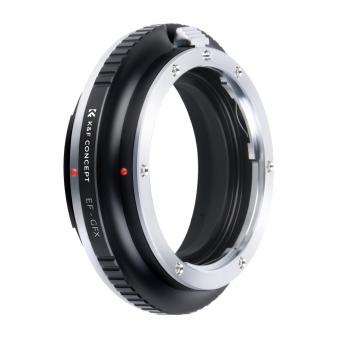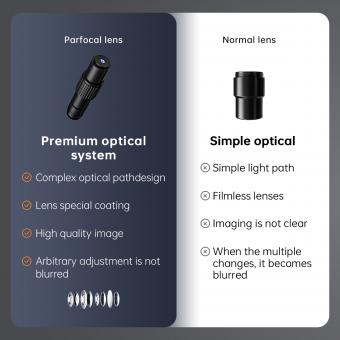Why Is The Image Inverted In A Microscope ?
The image in a microscope is inverted because of the way the lenses in the microscope work. The objective lens, which is located close to the specimen being viewed, produces an inverted image of the specimen. This image is then magnified by the eyepiece lens, which also produces an inverted image. As a result, the final image that is seen through the microscope is inverted.
This inversion is a result of the way that light rays are refracted, or bent, as they pass through the lenses of the microscope. The objective lens bends the light rays so that they cross over each other, producing an inverted image. The eyepiece lens then magnifies this inverted image, making it appear larger but still inverted.
While the inversion of the image may seem counterintuitive, it is actually a useful feature of microscopes. It allows scientists to view specimens in greater detail and to make more accurate observations of their structure and behavior.
1、 Optical principles of microscope imaging

The image in a microscope is inverted due to the optical principles of microscope imaging. When light passes through a lens, it refracts or bends. This bending of light causes the image to be inverted. In a microscope, the objective lens magnifies the image of the specimen, and the eyepiece lens further magnifies the image. As a result, the final image appears upside down and reversed.
This inversion of the image is a fundamental property of optical systems and is not unique to microscopes. It occurs in all optical systems, including cameras, telescopes, and binoculars. The reason for this is that the image formed by a lens is a real image, which means that the light rays converge to form an actual image that can be projected onto a screen. In contrast, a virtual image is formed when the light rays appear to converge but do not actually meet, such as in a mirror.
While the inversion of the image in a microscope may seem counterintuitive, it does not affect the usefulness of the instrument. In fact, the inverted image is often beneficial in biological research, as it allows scientists to view specimens in a way that is consistent with the orientation of the specimen in the natural world. Additionally, modern microscopes often include software that can digitally invert the image, allowing researchers to view the specimen in a more familiar orientation.
In conclusion, the image in a microscope is inverted due to the fundamental optical principles of microscope imaging. While this inversion may seem unusual, it is a necessary property of all optical systems and does not affect the usefulness of the microscope.
2、 - Refraction of light

The image in a microscope is inverted due to the refraction of light. When light passes through a lens, it is bent or refracted. The amount of refraction depends on the shape of the lens and the angle at which the light enters the lens. In a microscope, the objective lens is convex, meaning it bulges outward. When light passes through the objective lens, it is refracted and converges to a point. This point is known as the focal point, and it is where the image is formed.
The inverted image is a result of the way the light rays converge and cross over at the focal point. The top of the object being viewed is projected onto the bottom of the image, and the bottom of the object is projected onto the top of the image. This is why the image appears upside down and reversed.
While the inverted image in a microscope has been known for centuries, recent research has shed new light on the phenomenon. Scientists have discovered that the inverted image is not just a result of the refraction of light, but also due to the way our brains process visual information. Our brains are wired to interpret visual information in a certain way, and this interpretation can cause us to perceive the image as inverted. This is known as the "inverted retinal image hypothesis."
In conclusion, the image in a microscope is inverted due to the refraction of light. While this has been known for centuries, recent research has shown that our brains also play a role in perceiving the image as inverted.
3、 - Focal length of lenses

The image in a microscope is inverted due to the focal length of the lenses used in the microscope. The objective lens of a microscope has a shorter focal length than the eyepiece lens. This means that the objective lens produces a magnified, inverted image of the specimen, which is then further magnified by the eyepiece lens.
The reason for this inversion lies in the way that lenses bend light. When light passes through a convex lens, it is refracted or bent towards the center of the lens. This causes the light rays to converge and cross over at a point known as the focal point. If the object being viewed is placed beyond the focal point, the image produced by the lens will be inverted.
In a microscope, the objective lens is placed very close to the specimen, so the image produced is highly magnified. However, because the objective lens has a shorter focal length than the eyepiece lens, the image is also inverted. This is not a problem for most applications of microscopy, as the brain is able to interpret the inverted image and provide a correct orientation.
Recent advances in microscopy technology have allowed for the development of microscopes that produce non-inverted images. These microscopes use a different optical design, such as a prism or mirror, to correct for the inversion produced by the lenses. However, these microscopes are typically more complex and expensive than traditional microscopes, and are not necessary for most applications.
4、 - Magnification

The image in a microscope is inverted due to the way the lenses in the microscope work. The lenses in a microscope are designed to magnify the image of the specimen being viewed. However, the lenses also flip the image upside down and backwards. This is because the lenses in a microscope are convex lenses, which means they curve outward. When light passes through a convex lens, it is refracted or bent inward. This causes the image to be flipped upside down and backwards.
The reason why the image is inverted in a microscope is not a flaw in the design, but rather a consequence of the physics of light and the way lenses work. In fact, the inverted image is actually beneficial in some cases. For example, when viewing cells or other microscopic structures, the inverted image allows scientists to easily compare what they see under the microscope to what they see in diagrams or illustrations.
In recent years, there has been some debate about whether or not the inverted image in a microscope is necessary. Some researchers have suggested that it may be possible to design a microscope that does not invert the image. However, these designs are still in the experimental stage and have not yet been widely adopted. For now, the inverted image remains a fundamental characteristic of most microscopes.








































